How Jim Crow Era Fueled the Harlem Renaissance
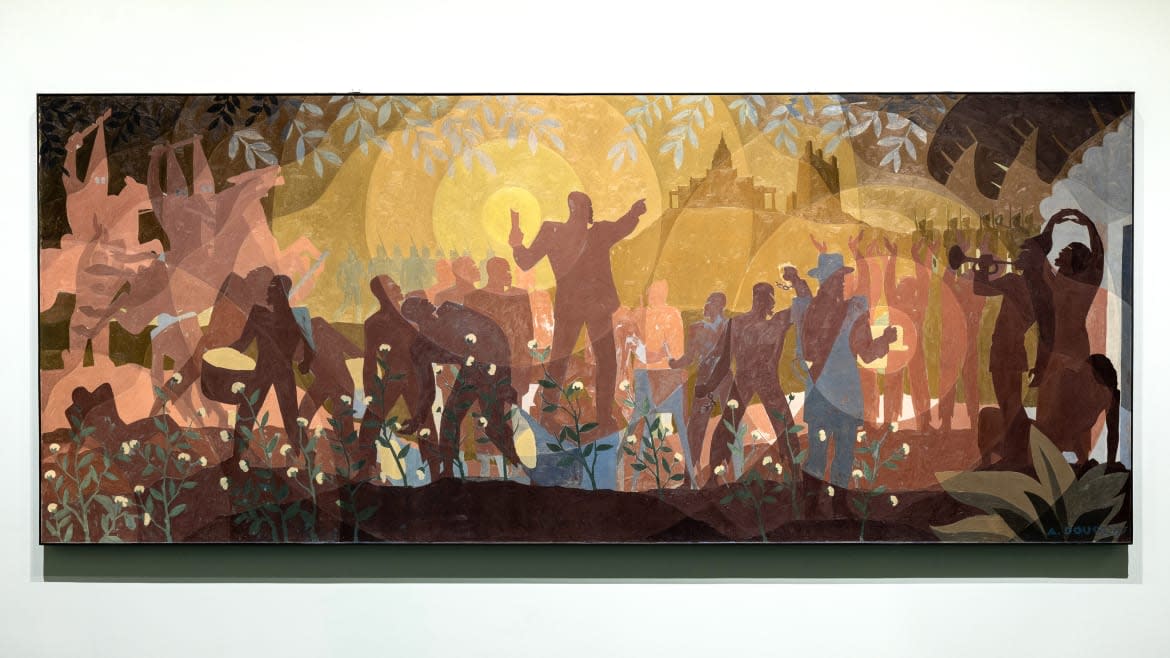
- Oops!Something went wrong.Please try again later.
The New Negro Movement was a celebration of culture across the African diaspora in the early decades of the 20th century. In the U.S., the period was marked by Black families relocating to mostly Northern and Western cities following World War I. After serving overseas, Black men realized they received a different sense of respect while abroad, respect that was not reciprocated in the Jim Crow South. So, families packed up and searched for new opportunities.
The Great Migration led to an explosion of Black culture—with Harlem, New York, serving as the cultural hub of art, music, dance, literature, theater, and philosophy.
The Metropolitan Museum of Art premiered its new exhibit, The Harlem Renaissance and Transatlantic Modernism, toward the end of Black History Month.
During the press preview on Feb. 20, Metropolitan Museum Director and CEO Max Hollein called it a “landmark exhibition.”
“This exhibition is indeed a milestone. It is a major celebration, and also a thorough examination of the Harlem Renaissance and its everlasting impact,” Hollein said to the crowd packed in a hall of the Met Museum. “It reframes the movement, certainly also cementing its place as part of a global flourishing. The moment of modernism started and where the Harlem Renaissance plays such an important role. It is a celebration of Black creativity.”
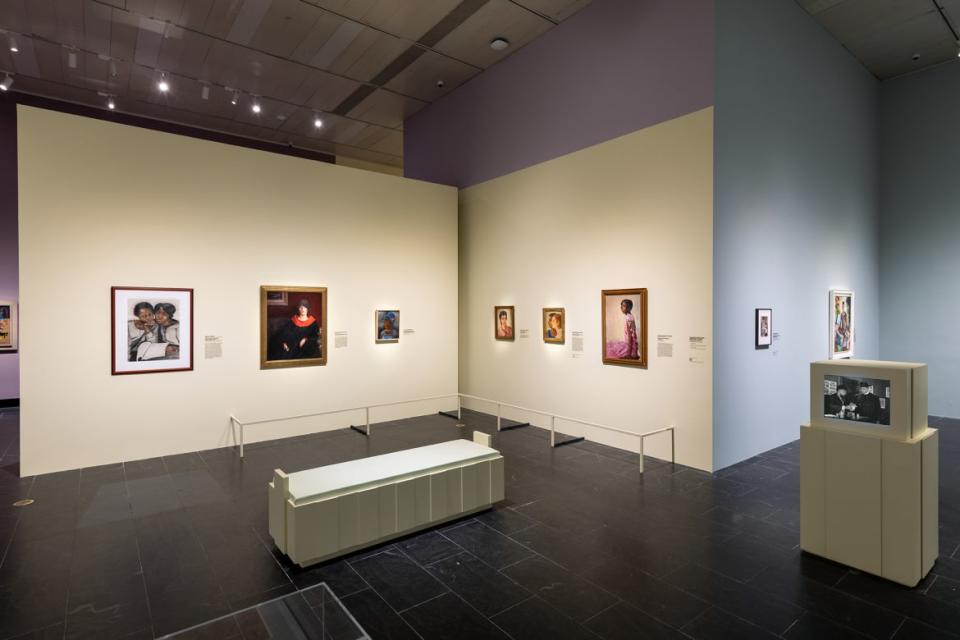
A general view of The Met's new exhibit The Harlem Renaissance and Transatlantic Modernism.
The exhibit, curated by Dr. Denise Murrell, includes 160 pieces from artists during the height of the Harlem Renaissance from the 1920s to 1940s. Portraits, photographs, paintings, magazine cover illustrations, sculptures, and even stills and frames from films are part of the collection.
“The exhibition makes clear, among many other things, that the Harlem Renaissance refers less to a place. Although, of course, there is one. But more to a time and also a transnational spirit of creative chemistry, of artistic vibrancy of self expression, and pride,” Hollein said.
South Florida School Demands Parent Consent for Black History Month Events
Darren Walker, the president of the Ford Foundation which served as a donor for the show, said the exhibit was a necessity for American culture.
“The narrative, the creativity, the genius of people of African descent is essential to tell the narrative of the American experience,” he added.
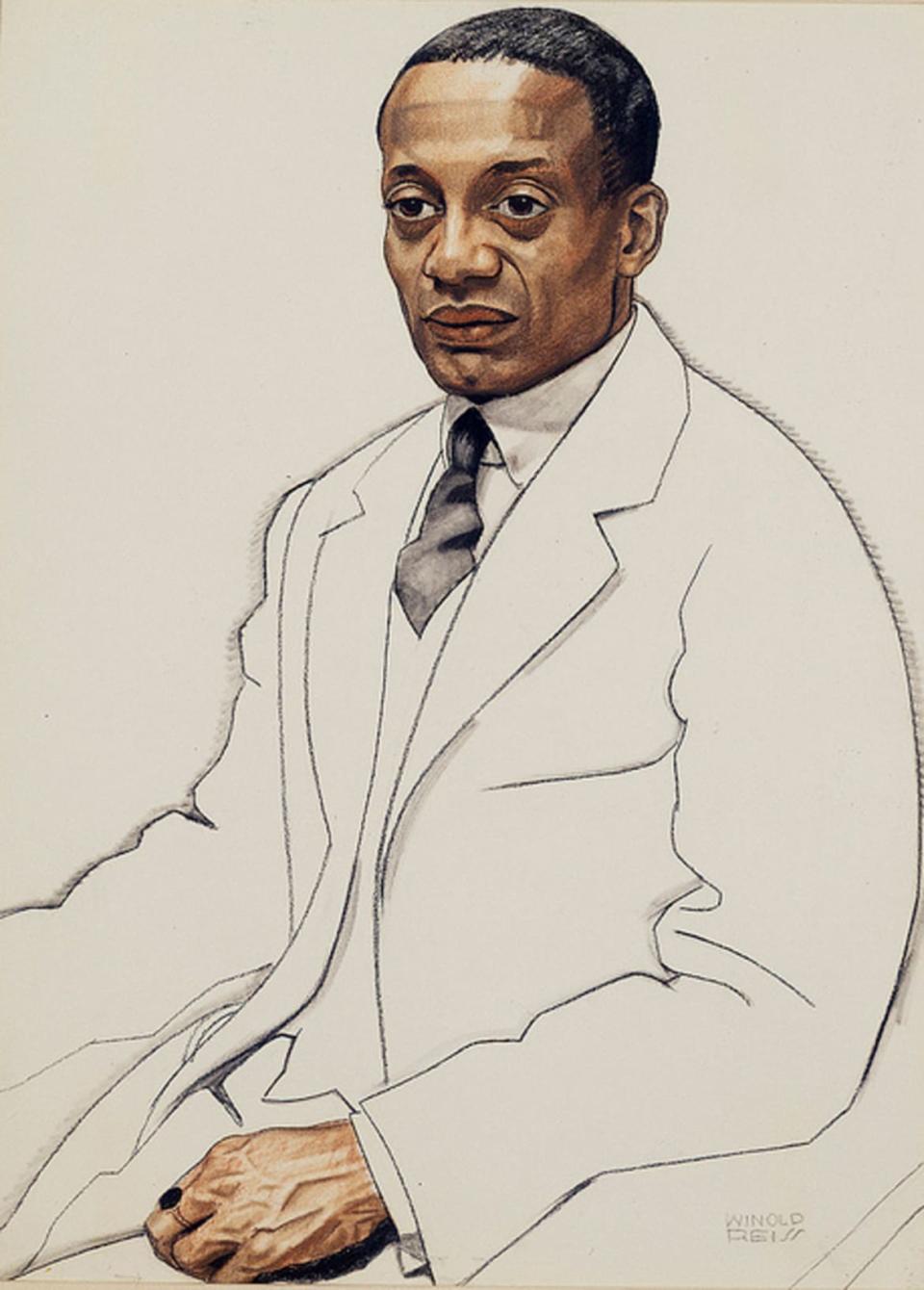
A portrait of Alain Locke by Winold Reiss.
“During a moment when there was this erroneous notion that people of African descent had no history, have made no contributions to the world, that was a rampant idea,” followed Joy Bivins, the director of the Schomburg Center for Research in Black Culture. Murrell said artists of the Harlem Renaissance were on a journey of developing “modes of self-expression based on the values and aspirations of the community itself.”
“They portrayed all aspects of modern city life that took place during the early decades of the Great Migration, when millions of African Americans left their segregated rural south in search of freedom and opportunity—in Harlem and expanding Black communities nationwide,” Murrell explained. “This exhibition explores how artists associated with the New Negro Movement, as the Harlem Renaissance was originally known.”
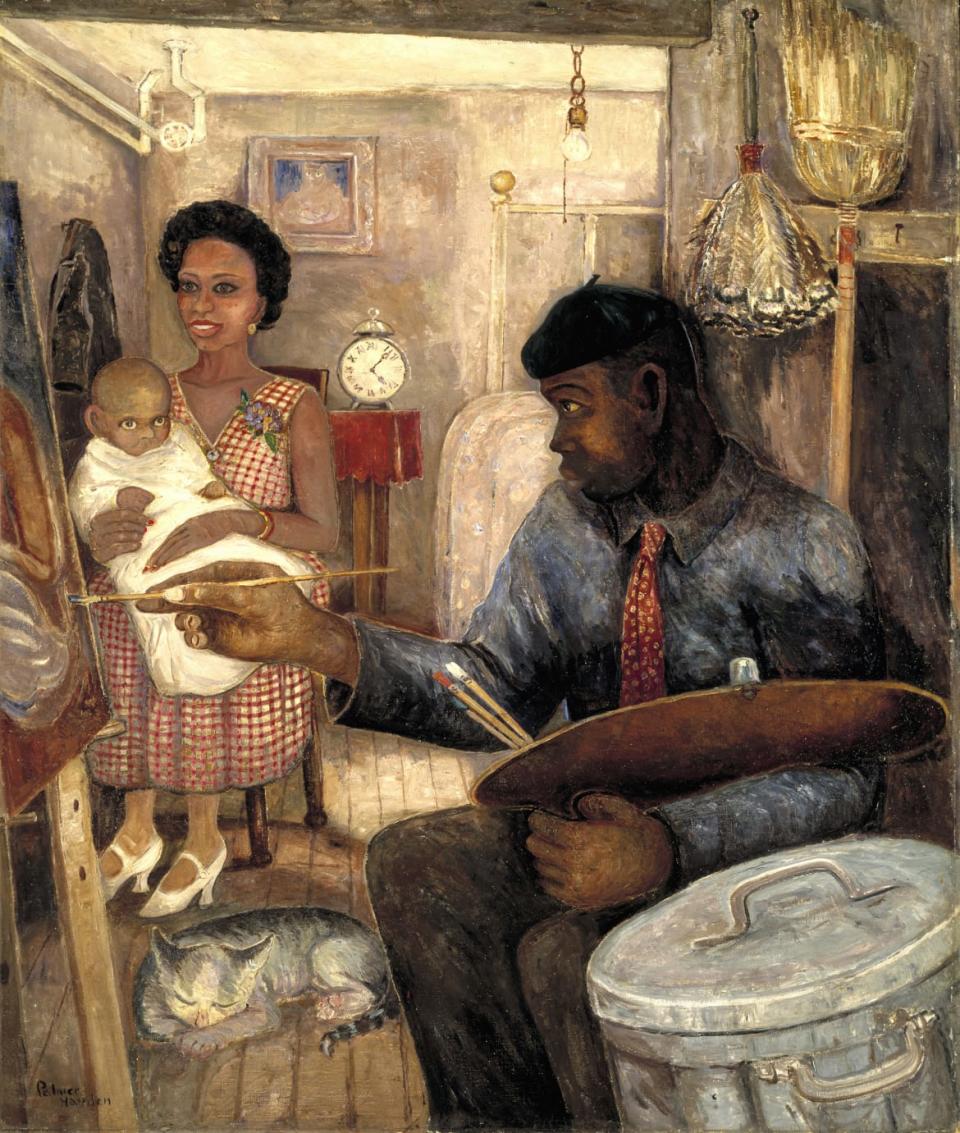
Palmer Hayden's The Janitor Who Paints, 1937.
A 1926 quote from Langston Hughes was shared throughout the exhibit as a not-so-subtle hint of the show’s intended purpose.
“We younger Negro artists who create now intend to express our individual dark-skinned selves without fear or shame. If white people are pleased we are glad. If they are not, it doesn’t matter. We know we are beautiful. And ugly too,” the Hughes quote read, as if reminding the viewer that no one cared for their opinion, one way or the other. “If colored people are pleased, we are glad. If they are not, their displeasure doesn’t matter either. We build our temples for tomorrow, strong as we know how, and we stand on top of the mountain, free within ourselves.”
The exhibit started with a visual introductory course to the leaders of the Harlem Renaissance. A portrait of the godfather, Alain Locke, greeted viewers immediately as they entered the hall. Hughes, W.E.B. Dubois, Zora Neale Hurston, and James Weldon Johnson followed suit by major artists of the movement—Winold Reiss, Aaron Douglas, Edwin Harleston, and Laura Wheeler Waring.
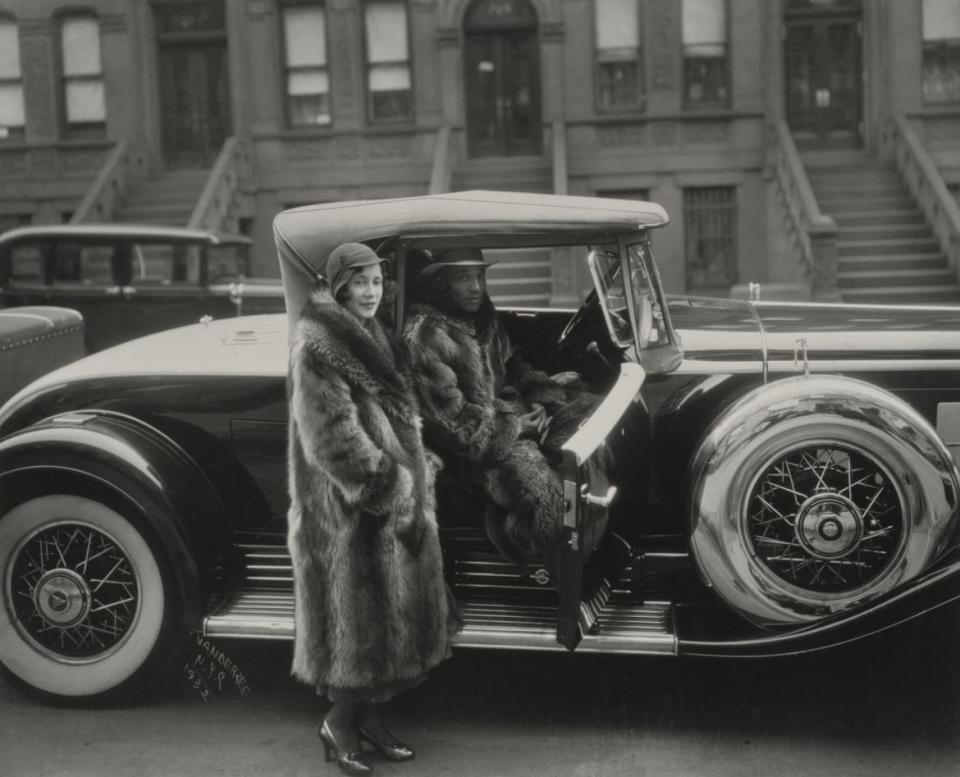
Couple, Harlem, 1932.
Then, came paintings and photographs showing Black Americans stepping out in elegance and taking pride in their appearance, seemingly in attempts to defy preconceived racial stereotypes. Couples leisurely enjoying car rides and decked out in furs, men and women dressed to the nines with gloves and hats, the nightlife scenes of men enjoying card games and billiards, parades and public musical performances, school children and educators, socials, dinners—all to illustrate what Black life was really like. There were also photos of well-organized protests, where Black men marched in city streets as if they were preparing to attend a church sermon instead.
‘Whitewashed’ Black History Courses Trigger Revolt in Missouri
Despite ongoing discrimination, Black people had the ingenuity to find beauty in their marginalized lives, even if no one else saw it but themselves.
“This complex and multi-layered story unfolds through portraits, scenes of city life, powerful applications of Black history, and cultural philosophy,” Murrell said. “We see the New Negro artists engaged with a legacy of ancestral Africa, as well as European modernism, American folk traditions, and very importantly, with the jazz aesthetic emerging from within the Black community itself. This exhibition, therefore, establishes the critical role of the Harlem Renaissance in the centering of the modern Black subject within a period enduring cultural legacy.”
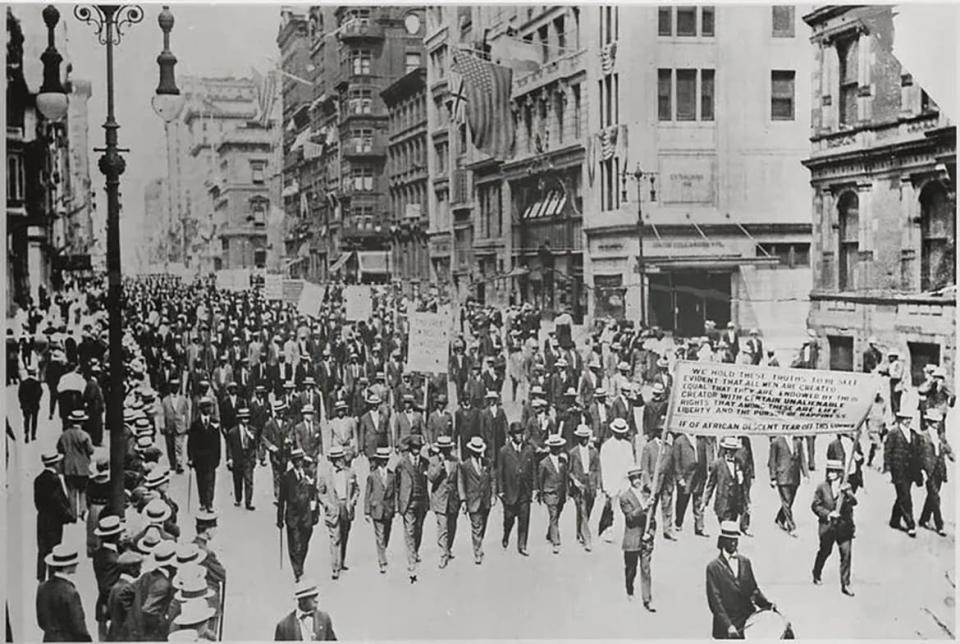
Silent Protest March, July 28, 1917, organized by the NAACP.
The focus of the exhibit followed the notion that Black artists wanted to reclaim their stories from white authors who traditionally held the power to tell them. Black people wanted to redefine themselves, cast away derogatory stereotypes that had been placed upon them by outsiders, and show the truth of who they really were even if they were just looking in the mirror.
They wanted to change the perception of Black people, even if it was just for other Black people.
Get the Daily Beast's biggest scoops and scandals delivered right to your inbox. Sign up now.
Stay informed and gain unlimited access to the Daily Beast's unmatched reporting. Subscribe now.

